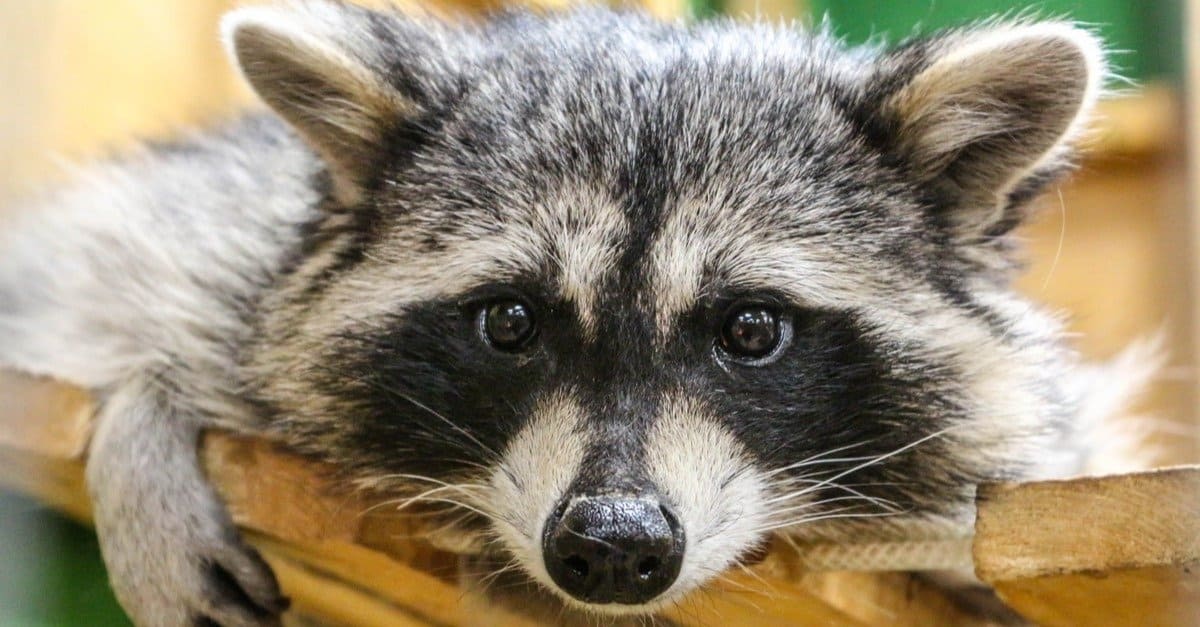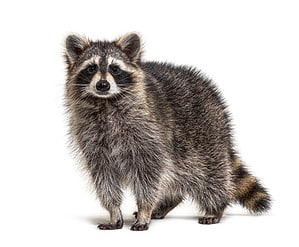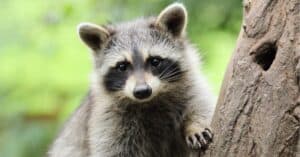The beloved “trash panda,” also known as the raccoon (Procyon lotor), can survive in just about any type of environment. These intelligent little creatures have an iconic appearance with dexterous little hands, unique black eye masks, and cheeky personalities. Commonly seen through the spring, summer, and fall, raccoons seem to mysteriously disappear when temperatures begin to drop. So, where do raccoons go in the winter? Let’s take a closer look at the habitats and behaviors of these clever little coons during the colder months of the year.
Where Do Raccoons Live?
Raccoons are native to North America, although they have been introduced to many other areas in the world as well. Today, raccoons can be found in the United States, Canada, Mexico, some of the northern areas of South America, Europe, and even Japan. They are mammals and grow around 16 to 28 inches long and weigh 11 to 57 pounds. The natural habitats for raccoons are forested areas, as they like the dense vegetation for shelter.
Raccoons prefer to make their homes near water sources and where there is plenty of food to eat. However, they are extremely adaptable animals and are not too picky when it comes to making a home. These furry critters can live in marshlands, woodlands, wetland forests, mountains, prairies, and urban environments as well. Raccoons commonly make themselves right at home living on farms or in parks, and can even be found in your background!
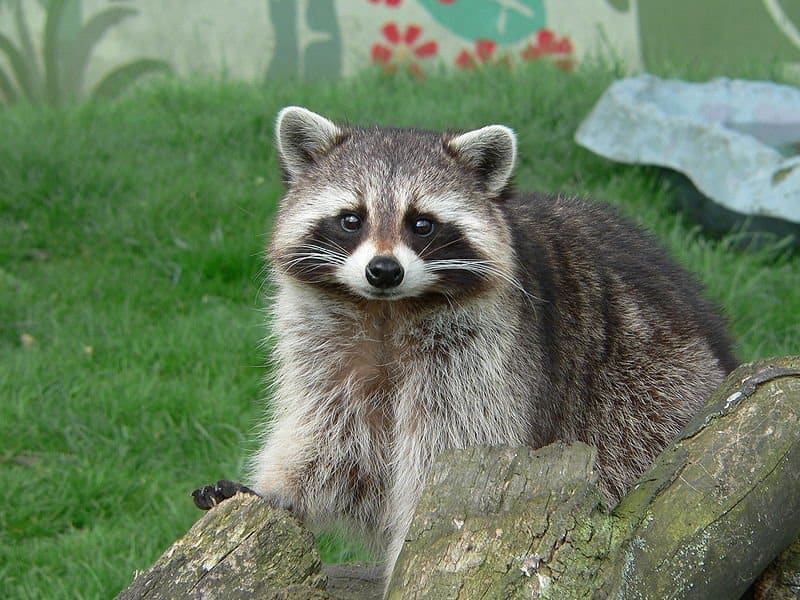
Raccoons commonly make themselves right at home living on farms or in parks, and can even be found in your background!
©Harlequeen / Creative Commons – Original
Where Do Raccoons Go in the Winter?
Many mammals hibernate during the winter or build prepared stockpiles to keep them well-fed during the colder months. Raccoons, however, do neither of these things. In fact, a raccoon typically continues on through the winter with its usual, day-to-day activities, albeit with a lot more sleeping and snuggling to keep warm.
Raccoons spend most of the winter cozied up in their nice warm dens, conserving as much energy and heat as possible. These animals are typically solitary during the rest of the year, but when winter comes they may live together in the same den to share body heat. Mother raccoons sometimes share their dens with their almost-adult babies as well.
Tree hollows and cavities are attractive to raccoons — they don’t actually make their homes in the treetops. Instead, these crafty critters prefer to build their nests on elevated structures or on the ground in burrows or holes. However, when it comes to urban areas, raccoons may climb trees and use branches to get onto roofs and even into attics.
Raccoons build dens anywhere where they can find adequate water, food, and shelter. Typically they choose abandoned burrows made by other animals, thickets or brush piles, rocky ledges and crevices, or the hollows of old trees and logs. However, in urban and suburban areas, raccoons may make their dens in attics, deserted chimneys, abandoned buildings, old sheds, or under porches. An ideal raccoon den provides protection from the elements (cold, wind, rain, snow, etc.), as well as a safe refuge from predators.
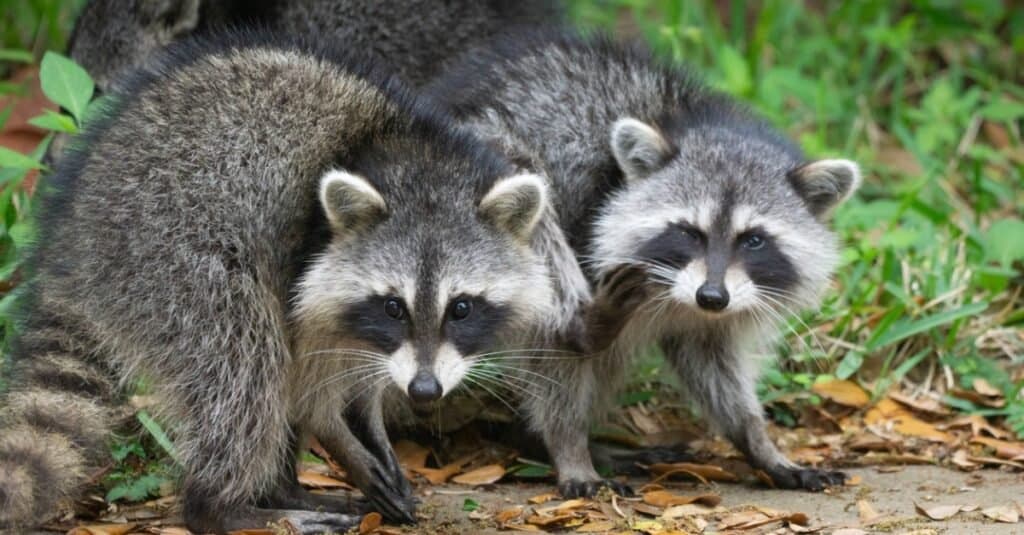
During the spring and summer, raccoons do tend to eat as much as they possibly can in an effort to build up their body’s fat stores for winter.
©Mark_Sawyer/Shutterstock.com
What Do Raccoons Do in the Winter?
Although they spend most of their time inside their dens, raccoons do occasionally venture out to find food. These animals are extremely clever scavengers and will eat just about anything they can find during the winter. They are omnivores who like things like nuts, fruits, berries, insects, eggs, grubs, crayfish, and small rodents.
Raccoons are clever and crafty, and they like to take advantage of any opportunity for a free meal — especially in the winter when food is scarce. With the black patches around their eyes and their propensity for raiding trash cans, these resourceful animals are commonly referred to as “trash pandas” instead of raccoons. Raccoons are also known to steal any pet food that is left outside at night. At times they may even attempt to sneak into a human home in search of food. However, these adorable trash pandas do come equipped with some manners — raccoons often wash their food before they eat it!
However, raccoons are hunters of the night, so you likely won’t see them during the day. Contrary to popular belief, if you do see a raccoon during daylight hours, that doesn’t mean that it’s rabid — it’s just rare! Raccoons are nocturnal animals that spend their nights on the prowl for food and water. Each night is an adventure and might involve digging for grubs, hunting for mice, sifting through trash cans, harvesting crops for a late-night snack, or rummaging through dumpsters.
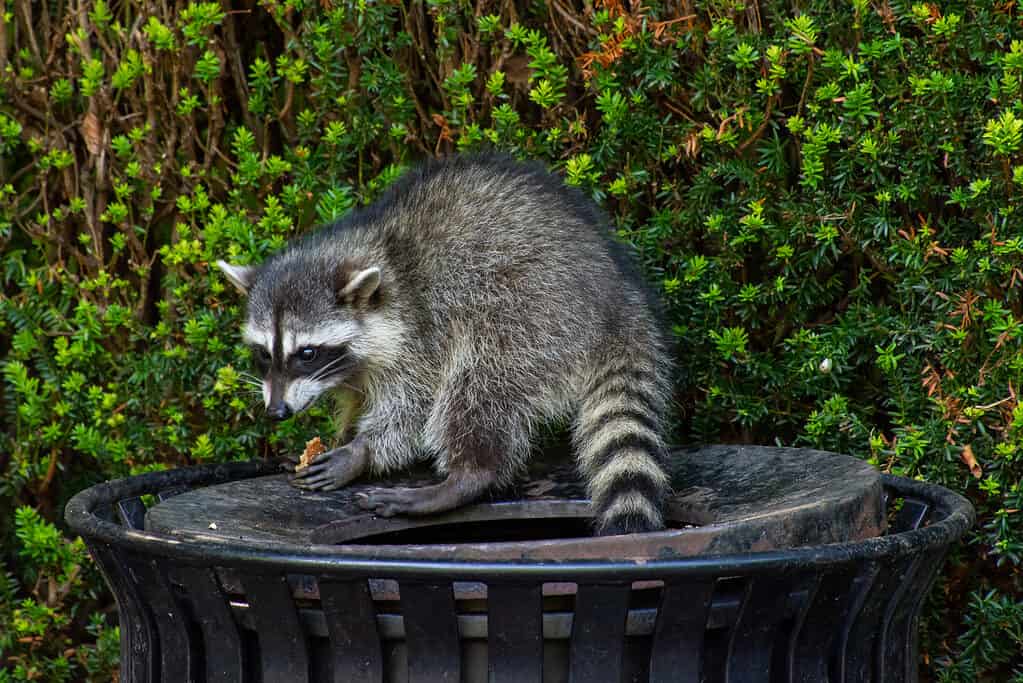
With the black patches around their eyes and their propensity for raiding trash cans, raccoons are commonly referred to as “trash pandas.”
©kingma photos/Shutterstock.com
How Do Raccoons Prepare for Winter?
Unlike squirrels and other small mammals, raccoons do not stockpile or store food to get them through the cold, long winter. Raccoons are built differently than other mammals and are well-adapted to cold climates. When winter comes, they cozy up inside a den and sleep for much of the time to conserve energy. Every now and again they do venture out to find something to eat. However, they quickly return to the warmth and safety of the den.
If the weather gets too cold for raccoons, however, they can enter into a state of torpor. Torpor is kind of like hibernation, except that it is not nearly as long. When an animal hibernates, their body goes into a deep sleep for several months. Torpor, on the other hand, only lasts a few days at a time. During torpor, a raccoon’s body temperature and metabolic rate decrease. This helps them to help conserve energy when it is too cold to go outside and find food. It’s not nearly as effective at energy conservation as hibernation is, but with torpor, a raccoon can wake up and get out quickly if they need food, or if they need to make a quick escape.
During the spring and summer months, raccoons do tend to eat a lot. In fact, a raccoon will try to eat as much as they possibly can during this time in an effort to build up their body’s fat stores. This helps them to make it through the winter when food is harder to come by. In addition, raccoons also grow thicker fur coats for insulation and warmth.
How Do You Keep Raccoons Away From Your Home During the Winter?
Raccoons are some of the most adaptable and clever animals in North America. It’s not uncommon for them to sneak into kitchens or attics looking for food and a warm place to sleep. However, it is important to note that raccoons are not looking to hurt humans; they’re just trying to make their way in the world like everyone else. If you find a raccoon in your home, it is best to call a professional to deal with it. But before it even gets that far, here are some tips for helping to keep raccoons away from your home:
- Always secure trash cans that are outside.
- Do not leave any food scraps, pet food, or unsecured trash outside near your home. This is like a homing beacon calling raccoons to pay a visit.
- You can install motion-activated lights and sensor-activated sprinklers around your home. This can help deter raccoons from trying to get into your home and yard.
- Keep attractive food sources like bird feeders away from areas that raccoons can access.
If a raccoon does make it into your home, be sure to call a professional. Trying to remove the raccoon on your own is dangerous for you, the raccoon, and anyone else in your home. They may look cute and cuddly, but raccoons are still wild animals, and they can be quite aggressive when they feel cornered.
Thank you for reading! Have some feedback for us? Contact the AZ Animals editorial team.

